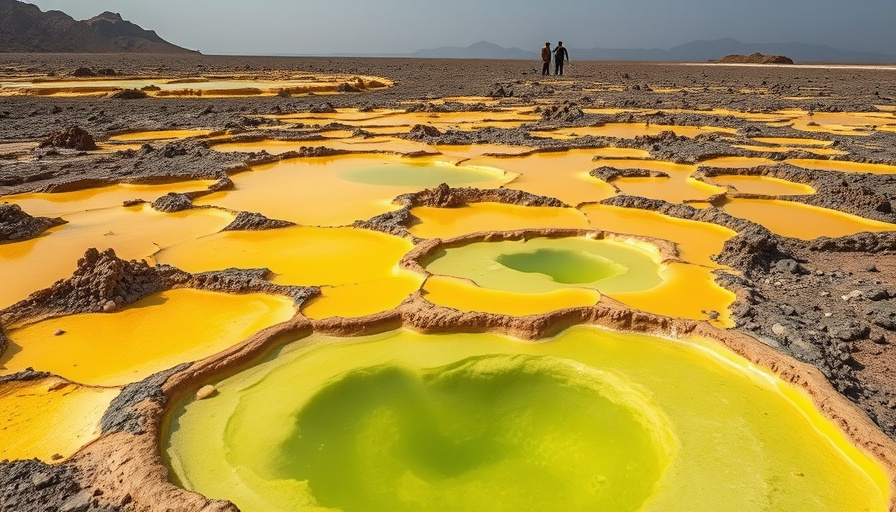
Discovering Ethiopia’s Danakil Depression: An Alien Landscape
Few destinations evoke the word 'alien' quite like Ethiopia's Danakil Depression, often referred to as one of the hottest and driest places on Earth. Tucked away in the Afar Region, this geological marvel presents a surreal array of vibrant colors—neon yellows, bubbling lava lakes, and stunning salt flats. For adventurers and explorers, the Danakil Depression shines as a must-visit, offering unforgettable experiences that feel worlds apart from the typical travel itinerary.
A Journey Through the Land of Fire and Salt
Situated below sea level, the Danakil Depression is part of the expansive East African Rift system, where tectonic plates in constant motion have sculpted a landscape with volcanoes, acid pools, and otherworldly salt formations that appear almost too fantastical to be real. At the heart of this remarkable region lies Erta Ale, the crown jewel known as one of the few continuously active lava lakes worldwide. Trekkers who embark on a journey here not only hike challenging trails but also witness the mesmerizing beauty of molten rock and steam, feeling the Earth's raw power in a manner few places can offer.
The Cultural Context of This Unique Destination
While the mesmerizing landscapes of the Danakil Depression draw many, it is the local culture that truly makes the journey profound. The Afar people, known for their resilience in this harsh environment, provide travelers with insights into their lives and traditions, blending rich history with breathtaking scenery. Engaging with the Afar community illustrates a way of life steeped in adaptability and strength, reminding adventurers that there is much more than the surface allure to discover.
What Makes the Danakil Depression Stand Out
Travel plans often revolve around typical destinations, but an adventure into the Danakil Depression is truly unique. The vibrant geothermal activity, striking landscapes, and cultural richness draw visitors far beyond standard safari experiences. Echoing through the exhilarating hikes and breathtaking views is the opportunity for personal growth and self-reflection, leaving travelers with transformative memories.
Practical Travel Tips for Aspiring Adventurers
A trip to the Danakil Depression demands preparation and awareness of the elements. Travelers should consider logistical details such as traveling with a reputable guide, understanding local customs, and being attuned to safety measures particularly relevant in extreme conditions. Yet, those who dare face the heat are richly rewarded with experiences that blur the lines of reality and adventure—encounters that not only nourish the spirit but also ignite the imagination.
Conclusion: An Invitation to Explore
As the world shifts towards more immersive travel experiences, the allure of off-the-beaten-path destinations like the Danakil Depression continues to grow. For those ready to embrace the otherworldly beauty, rich culture, and thrilling adventures that Ethiopia offers, now is the time to plan a journey. Explore this stunning region and see for yourself why it tops travel lists as a transformative adventure.
 Add Row
Add Row  Add
Add 




Write A Comment